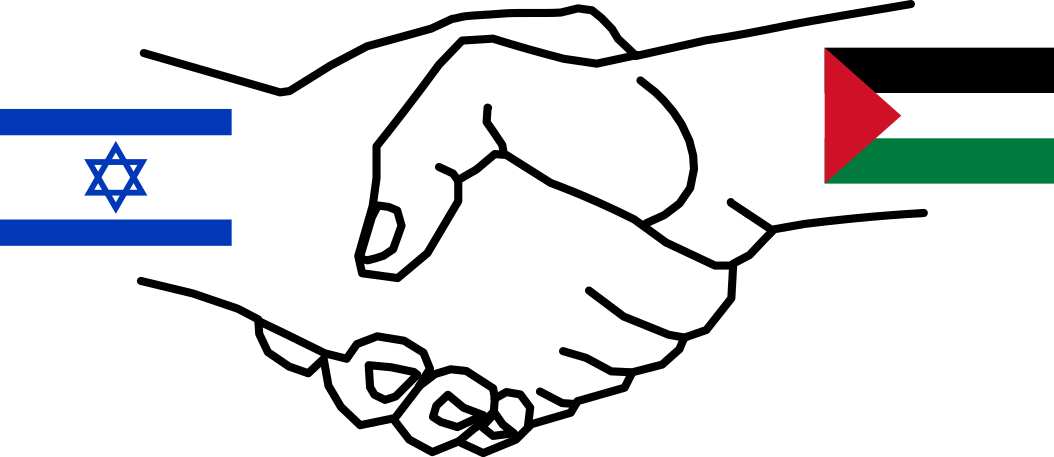Landschlacht, Switzerland, 16 December 2017
It´s easy to criticize.
Especially when a leader is such an easy target.
Donald Trump is such a man.

Above: Donald Trump (born 1946), 45th US President since 20 January 2017)
Last week the Donald announced that he would move the US Embassy from Tel Aviv to Jerusalem, acknowledging that Jerusalem is the capital of Israel.
Above: The US Embassy, Chancery Building, Tel Aviv
The 45th President used words such as “we acknowledge the obvious”, “a recognition of reality”, and “the right thing to do”.
Now it is my normal gut reaction to distrust anything that Trump says or does, but this particular policy merits a closer look, for (and I hate to admit it) this diplomatic decision not only has its failings but surprisingly its merits.
Though I have yet to visit this Holy City, this City of David and Solomon, this City of Peace, Jerusalem has always held a strong place on my bucket list of places to visit before I die.
Above: Scenes of Jerusalem: Jerusalem Skyline, an Old City souq, Mamilla Market, the Knesset, the Dome of the Rock, the Tower of David and Old City Walls, the Western (Wailing) Wall
Friends of mine have visited Jerusalem and the movie Kingdom of Heaven (2005) sparked within me a renewed interest in the City.

Jerusalem, Israel´s ancient and enigmatic capital, has always been one of the world´s most fascinating cities, one of the holiest, one of the most beautiful, and one of the most coveted and disputed cities.
Now if you, the casual observer, listen to most media channels, (with the notable exception of America´s Pravda: Fox News), one perceives a sense of international outrage at this sudden provocative move on the part of the United States.
The European Union, the Organisation of Arab States, ISIS, Hamas, Russia, the Pope, Turkey, Jordan, Saudi Arabia, France, the UK, Germany, and even non-confrontational Canada and Switzerland have all expressed fears and concerns that Trump might be opening the gates of hell, a wave of Islamic violence, a kiss of death in the peace process.
But we forget that Trump´s announcement is actually not a new one.
In 1992, Bill Clinton expressed his Administration´s intentions to move the US Embassy.

Above: Bill Clinton (born 1946), 42nd US President (1993 – 2001)
On 23 October 1995, the US Congress passed the Jerusalem Embassy Act for the purposes of initiating and funding the relocation of the Embassy of the United States in Israel from Tel Aviv to Jerusalem.
But there exists within American law the option to delay the application of an Act, a presidential waiver that comes up again and again every six months.
Presidents have hesitated on implementing the Jerusalem Embassy Act because of the region´s volatile and conflicting interests.
In 2000, George W. Bush announced the government´s renewed intentions to move the Embassy.

Above: George W. Bush (born 1946), 43rd US President (2001 – 2009)
Twice in 2008, Barack Obama expressed his belief that Jerusalem is the capital of Israel and thus embassies should be located there.

Above: Barack Obama (born 1961), 44th US President (2009 – 2017)
In June 2016, Donald Trump signed a six-month waiver on the oft delayed Jerusalem Embassy Act.
Last week, he became the first President to not sign it.
His critics says that Trump´s decision was an unstrategic move, political pandering to his fundamental Christian and Jewish supporters on the eve of an important election in Alabama, a slap in the face to Palestinians and the peace process, strengthening Islamic extremism.
Trump´s supporters herald his decision as being the will of the American people, that he acted with courage, that he “moved the ball forward” in a process that had been too long stalemated and stagnant.
US Secretary of State Rex Tillerson acknowledges the negative backlash to Trump´s determination to move the Embassy, viewing it as “short term pain for long term gain”.

Above: Rex Tillerson (born 1952), 69th US Secretary of State
The government of Israel and its Prime Minister Benjamin Netanyahu are delighted with this latest American move, for the US Embassy will become the first, of the 84 nations with diplomatic presence in Israel, to have its embassy in Jerusalem rather than Tel Aviv.

Above: Benjamin Netanyahu (born 1949), 9th Israeli Prime Minister (1996 – 1999 / 2009 – )
(The international community, other than the United States, the Czech Republic and Vanuatu, does not recognise Jerusalem as Israel´s capital, and neither the Czech Republic nor Vanuatu have embassies in Jerusalem.)
Now the question you may be asking at this point is:
Isn´t Jerusalem already the capital of Israel?
This depends on how a capital is defined and who defines it.
The State of Israel maintains its primary government institutions in Jerusalem.
All branches of the Israeli government are located in (West) Jerusalem, including the Knesset (Israel´s parliament), the residences of the President and the Prime Minister, and the Supreme Court.
Above: The Knesset, West Jerusalem
For Israelis, Jerusalem remains their eternal and undivided capital, as if the Babylonians, Persians, Greeks, Romans, Muslims, Turks, British and Jordanians had never existed.
For Israelis, the capture of Jerusalem and making it Israel´s capital by King David in 997 BC and the building of the Great Temple by his son and successor King Solomon, mean that Jerusalem is the destined heart of the nation.
In their minds the establishment of the modern state of Israel in 1948 was simply a confirmation of Israel´s right to exist Above: The flag of Israel
Above: The flag of Israel
But it was the manner in which Israel was established and maintained that has a number of people question Israel´s right to exist.
Because of the history that has led us to this point the international community of nations have refused to acknowledge that Israel even has a capital.
Few accounts written prior to the Roman era can be considered absolute facts and millennia-old events are constantly being reinterpreted to fit current political agendas.
So let´s fast forward a few thousand years to the modern conflict between the Jews and the Palestinians.
As stated above, Jews claim the right to live in the lands now known as Israel based on a historical lineage stretching back to David and Solomon.
Taken to the extreme, some Israelis claim that God gave Israel to the Jews and that the land is theirs by divine right.
The Palestinian claim is based on centuries of occupancy from the ascendancy of Islam in the 7th century until the 20th century.

Above: Flag of Palestine
Some Palestinians suggest that they are descendants of the Philistines from whom the precursors of David took the land after the death of Moses.
Conflicts over whose land is it date back to the rise of Zionism in 19th century Europe.
In his 1896 book Der Judenstaat (The Jewish State), Austrian journalist Theodore Herzl, widely regarded as the founding father of Zionism, determined that the Jews would never be accepted in Europe and had to establish their own homeland.

Above: Theodore Herzl (1860 – 1904)
In 1897 Herzl organised the first International Zionist Congress in Basel, which resolved that “the goal of Zionism is the establishment for the Jewish people of a home in Palestine.”
Waves of Jewish immigrants began making their way to Palestine, which was then part of the Ottoman Empire.
With the outbreak of World War I in 1914 the Ottoman Empire sided with Germany.
Sultan Mehmed V declared a jihad (holy war) calling on Muslims everywhere to take up arms against Britain, France and Russia.
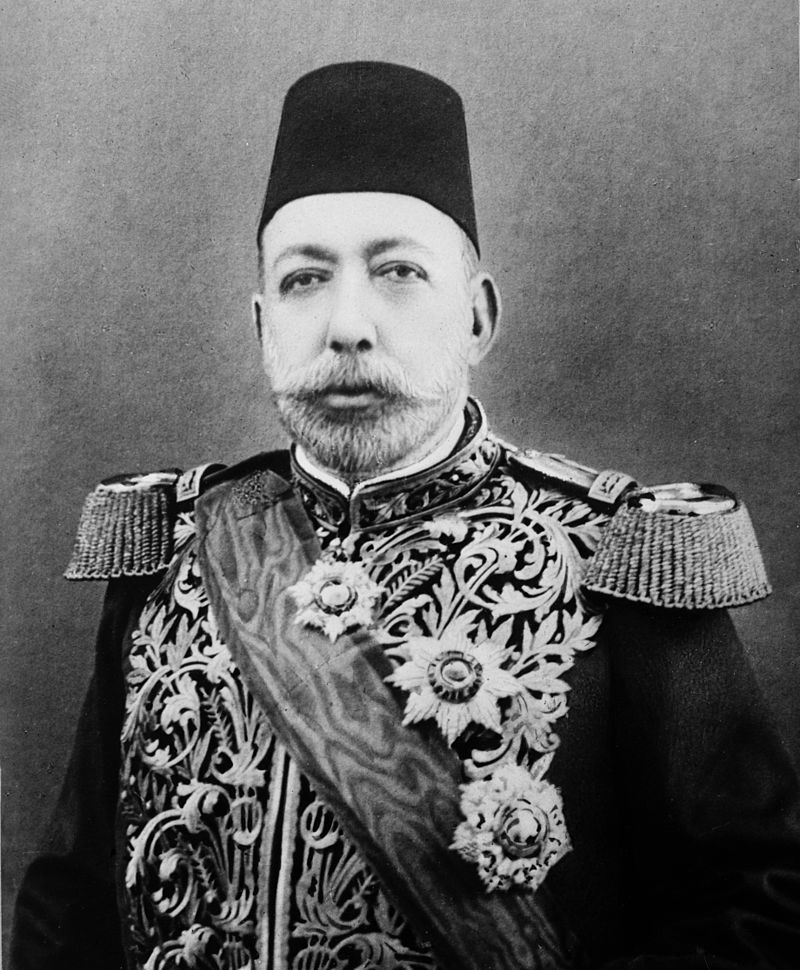
Above: Mehmed V (1844 – 1918)
To counter the Sultan, the British negotiated an alliance with Hussein bin Ali, the Grand Sherif of Mecca.
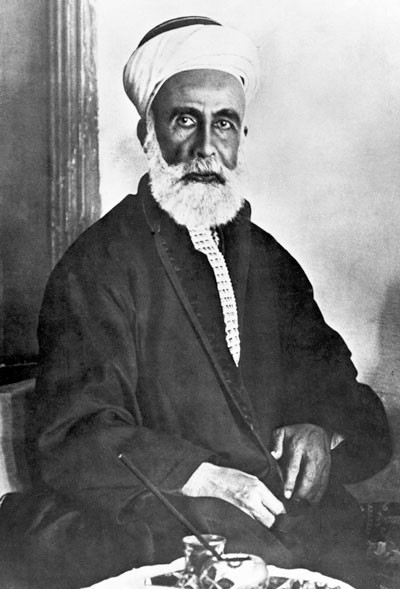
Above: Hussein bin Ali (1853 – 1931)
In 1916 Hussein agreed to lead an Arab revolt against the Turks in exchange for a British promise to make him King of the Arabs once the conflict was over.
The British never had any serious intention of keeping their promise.
At the same time they were negotiating with Hussein, they were holding talks with the French on how to carve up the Ottoman Empire.
And Britain also promised the Zionist movement the Balfour Declaration (2 November 1917) that would view in favour the establishment in Palestine of a national home for the Jewish people.

Above: The Balfour Declaration, a letter written by Foreign Secretary Arthur Balfour to Lord Rothschild, a leader of the British Jewish community
In the wake of World War I, these lands passed into British hands and were named the British Mandate of Palestine, Iraq and Transjordan.

Having taken control of Palestine in 1918, the British were put pressure to allow unrestricted Jewish immigration to the territory.
With tensions rising between Palestine´s Arab and Jewish residents, the British refused to do this and placed strict limits on the number of new Jewish immigrants.
Several plans to partition Palestine were proposed during the 1930s and 1940s, but World War II put an end to all such discussion.
When the War ended, Britain again found itself under pressure to allow large-scale Jewish immigration, particularly in the wake of the Holocaust (1941 – 1945).

Above: Jews arriving at Auschwitz, German-occupied Poland. Most were sent straight to the gas chambers.
The Arabs, feeling betrayed by the British and their broken promises, revolted against the British in 1936 causing much widespread violence
Seeking to comprehend the cause of the Revolt, the Peel Commission (also known as the Palestine Royal Commission) concluded that Jews and Arabs wanted to govern the same land and they recommended that both the Jews and the Palestinians be granted their own separate nations while keeping Jerusalem and access from there to the Mediterranean under Mandate control.

The British offered the Arabs 80% of the disputed territory and the Jews the remaining 20%.
Despite the tiny size of their proposal, the Jews decided to accept this offer.
The Arabs rejected the recommendations and resumed their violent rebellion.
In 1947, the British government announced it would withdraw from Palestine, stating it was unable to arrive at a solution acceptable to both Arabs and Jews.
The Palestine problem was handed over to the newly created United Nations to solve.

Above: Flag of the United Nations
The UN adopted Resolution 181 to partition Palestine with an independent Palestinian state, an independent Jewish state and the City of Jerusalem under an international trusteeship system, similar to how Berlin would be subdivided after the War.

The Jews accepted the partition and declared the founding of the state of Israel on 14 May 1948.
The Arabs did not and war broke out immediately with Egypt, Iraq, Jordan Lebanon and Syria defending Palestinian claims.
The Arabs were humiliatingly defeated.
Nonetheless Jordan would maintain control over the West Bank (territory west of the Jordan River) including Jerusalem.
Recriminations from this defeat and the refugee problem it created led to revolts in Arab countries.
King Abdullah of Jordan was assassinated in 1951.

Above: King Abdullah I (1882 – 1951)
In July 1952 a group of young officers toppled the Egyptian monarchy.
By 1954 Gamal Abdel Nasser became Egypt´s acknowledged leader.

Above: Gamal Nasser (1918 – 1970), 2nd Egyptian President (1956 – 1970)
After facing down the combined powers of Britain, France and Israel over the Suez Crisis of 1956, Nasser emerged as the preeminent figure and a central player in the politics of nationalism, socialism and decolonisation that gripped the Arab world.
Arab opposition to the creation of the state of Israel again came to a head (helped by Nasser´s fiery speeches) in 1967.
In May 1967, the Egyptian army moved into key points in the Sinai Peninsula, announced a blockade of the Straits of Tiran, effectively closing the southern Israeli Red Sea port of Eilat.
Egypt, Jordan and Syria were at war with Israel.
Israel responded on 5 June 1967 with a pre-emptive strike that wiped out the entire Egyptian air force and within six days the war was over with Israel the stunning victor.
When the Six Day War was over Israel had seized all of the Sinai Peninsula and the Gaza Strip from Egypt, the Golan Heights from Syria and the West Bank including East Jerusalem with its Old City from Jordan.

This annexation of East Jerusalem by Israel has yet to be recognised by many of the world´s states.
About a third of Jerusalem is settled by Palestinians, some from families that have been in the Holy City for centuries.
The Knesset was divided in two as to what to do with the lands recently conquered:
- Return the West Bank to Jordan and the Gaza Strip to Egypt in exchange for peace, or….
- Give the conquered territories to the region´s Arabs so that they might build their own state there.
Neither initiative got very far.
A few months later the Arab League met in a summit in Khartoum, Sudan and issued their famous Declaration of the Three No´s:
- No peace with Israel
- No recognition of Israel
- No negotiations with Israel

Above: The Arab League (all coloured countries), signatories of the Khartoum Declaration (green and blue), signatories who later recognized Israel (blue)
Again the Palestinian two-state solution was once again rejected by the Arabs.
By 1971, preparations were well underway for the next Middle Eastern war.
Egypt, Jordan and Syria were constantly under pressure from their citizens to recover the land lost in 1967.
On 6 October 1973, Egyptian troops crossed the Suez Canal, taking Israel almost entirely by surprise, as the country was at a standstill, observing the holy day of Yom Kippur.
When the Yom Kippur War ended in late 1973, Israel was again victorious.
However the early defeats of Israel at the start of the war left the Jewish state less certain of its defences and resulted in negotiations with Egypt that led to the 1978 Camp David Agreement and peace between Egypt and Israel.

Above: Flag of Egypt
A peace that the rest of the Arab world never forgave Egypt for doing.
During the 1970s and the 1980s, under the leadership of Yasser Arafat, the Palestinian Liberation Organization (PLO) committed many acts of terrorism, while much of the world watched in horror, condemning the Palestinians for their ruthlessness.

Above: Yassir Arafat (1929 – 2004)
But in 1987 the Intifada (popular uprising) pitted stone-throwing Arab youths against well-equipped Israeli soldiers.
The resulting images seen worldwide on TV news did much to resurrect international sympathy for the Palestinians.
The 1991 Gulf War between the US and Iraq brought about a renewed dialogue between Jews and Arabs both desperately seeking approval from the international community.

Above: Flag of Iraq
While the US bombed Iraq, it encouraged Israel to exercise military restraint in order to maintain a shaky anti-Iraq coalition that included Saudi Arabia.
Israel suffered Iraqi missile attacks against it without responding.
On 13 September 1993, deputies from both Israel and the PLO signed a Joint Declaration of Principles outlining Israeli withdrawl from Jericho and the Gaza Strip and authorising limited autonomy for the Palestinian Authority (PA).

Above: Map of areas controlled by the Palestinian National Authority
PLO leader Arafat and Israeli Prime Minister Yitzhak Rabin shook hands on the White House lawn, resulting in the Gaza Strip and most of the West Bank handed over to PA rule.

Above: Yitzhak Rabin (1992 – 1995), 5th Israeli President (1974 – 1977 / 1992 – 1995)
In May 1994 both parties signed the Cairo Accord.
By 1995 Israeli troops had been withdrawn from most of the West Bank.
The peace process went forward, despite the assassination of Rabin by a disgruntled Jewish extremist on 4 November 1995.
Attempts by the new Prime Minister Shimon Peres to carry on the peace process were frustrated by terrorist activities by the extremist organisation, Hamas (Harakat al-Muqaama al-Islamiya).

Above: Shimon Peres (1923 – 2016), 9th Israeli President (2007 – 2014), 8th Israeli Prime Minister (1977 / 1984 – 1986 / 1993 – 1996)
In 2000, the Israeli Prime Minister Ehud Barak and PLO Chairman Yasser Arafat met at Camp David to discuss an alternative two-state solution.
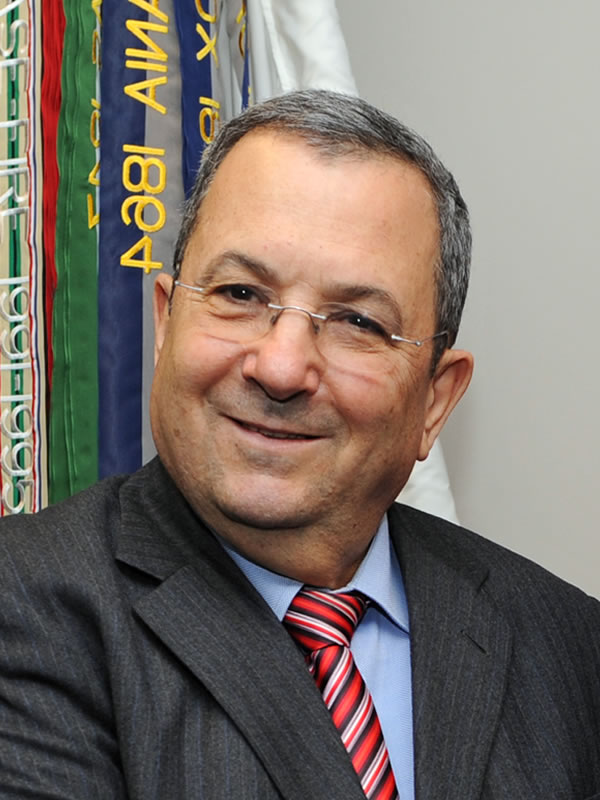
Above: Ehud Barak (born 1942), 10th Israeli Prime Minister (1999 – 2001)
Barak offered Arafat a separate Palestinian state, all of the Gaza Strip, 94% of the West Bank, with East Jerusalem as its capital.
Arafat rejected the offer.
In the words of US President Bill Clinton:
“Arafat was here 14 days and said “No” to everything.”
Instead a bloody wave of suicide bombings, a new Intifada, was launched, resulting in thousands of deaths and injuries, on buses, in wedding halls and pizza parlours.
Israeli voters were fed up with the failed peace process.
While most Israelis and Palestinians continued to support the cause of peace and the creation of a Palestinian state, from late 2000 to early 2002, tit-for-tat violence escalated, with suicide bombers targeting Israeli civilians and the Israel Defence Forces (IDF) pummeling Palestinian targets, including Palestinian civilians, on the West Bank and Gaza.
For Isreal the breaking point came on 27 March 2002, when a Palestinian suicide bomber killed 26 people and injured 150 at a Passover dinner at the Park Hotel in Netanya.
Above: The site of the Passover Massacre, ten years later
At this point, both sides rejected a new Saudi peace proposal that supported the Arab nations´ diplomatic recognition of Israel in exchange for a Palestinian state on the West Bank, Gaza Strip and East Jerusalem.
In the days that followed, hopes of a negotiated settlement crumbled in the face of escalating violence from both sides.
In 2005, Israel unilaterally left the Gaza Strip leaving the Arabs complete control there.
Instead of developing the territory for the benefits of its citizens, the Palestinians turned Gaza into a terrorist base, firing thousands of rockets into Israel, launching more than 100 rockets a month.
In 2006, Palestinians in the Gaza Strip voted Hamas into their parliament.

Above: Logo of Hamas (Islamic Resistance Movement)
With Fatah (the political party founded by Arafat) getting nowhere in the peace process and Israeli settlements sprouting up like mushrooms, Gazans voted for Hamas.
The two Palestinian governments would split Palestine, resulting in the PA governing the West Bank and Hamas the Gaza Strip.
In 2008, Israel tried yet again.
Israeli Prime Minister Ehud Olmert went even further than Barak had but including additional land to sweeten the deal.

Above: Ehud Olmert (born 1945), 12th Israeli Prime Minister (2006 – 2009)
Like Arafat before him, the President of the PA Mahmoud Abbas turned the deal down.

Above: Mahmoud Abbas (born 1935), 2nd President of Palestine since 2005
Each time Israel has agreed to a Palestinian state, the Palestinians have rejected the offer, often violently.
In 2012, the UN General Assembly granted Palestine non-member observer state status, acknowledging the de facto existence of the nation.
In May 2015, the Vatican officially recognised the state of Palestine along with 135 UN members that acknowledge Palestinian independence, yet there still remain countries (the US, Israel, Canada, the UK, Australia, Italy, France, Spain, Germany, Japan and Mexico) that won´t recognise the legitimacy of an independent Palestinian state with its 4 million inhabitants.

Above: Flag of the State of Vatican City
Yet again the problem has remained that two groups won´t share the same land.
Disputes over water rights, occupation of land, freedom of movement and mutual security suggest that reconciliation is unlikely in the near future.
If Israel just allowed the Palestinians to have a state of their own, there would be peace in the Middle East, so say UN delegates, European ambassadors and most college professors.
But it seems that the problem isn´t so much Israel´s refusal to recognise a Palestinian state as it is the Arab world´s refusal to recognise a Jewish state in the Middle East.
Israelis have pretty much abandoned the idea that compromise is possible with the Palestinians, so there has been much expansion of Jewish settlements in the east of Jerusalem and other occupied territories.
These settlements are seen as illegal under international law, but Israel disagrees.
International lawmakers are saying that any change in the status of Jerusalem can only be the result of a negotiated peace process, so, for now, all countries with embassies in Israel keep them in or near to Tel Aviv and just have consulates in Jerusalem.
Jerusalem is home to sacred relics, historic figures and holy sites shared by the world´s three largest monotheistic faiths.
Jerusalem has been destroyed at least twice, traded hands dozens of times and currently exists in a really contested legal status.
The city we see today is very different from the city of old.
The Jerusalem of the Bible is what we refer today as the Old City, part of occupied East Jerusalem.
These are the holiest of the Holy Lands: the Church of the Holy Sepulchre, the Western Wall and the Al Aqsa Mosque.
The Wall and the Mosque share an area known as the Temple Mount.
The Church of the Holy Sepulchre holds two of Christianity´s holiest sites:
Above: Church of the Holy Sepulchre, Old City, East Jerusalem
- Calvary, considered the place of Jesus Christ´s crucifixion
- The Empty Tomb, where Jesus is said to have been buried and resurrected
In the entrance is the Stone on which Jesus´ body was washed after His death on the cross.
To the right is Golgotha, where He was crucified between two thieves.
Below is the crypt in which Jesus was lain before His resurrection.
On the walls leading to the crypt are countless little crosses carved by pilgrims during the Crusades.
Six religious orders share custody of the Church: Ethiopian Orthodox, Armenian Apostolic, Roman Catholic, Greek Orthodox, Coptic Orthodox and Syriac Orthodox.
To prevent disputes, each order manages its own section based on the Status Quo issued in 1852.
The Church keys however are entrusted to a Muslim family, who have been opening and closing the doors every day for many generations.
Judaism sees the Temple Mount as its holiest site and the place which mostly holds God´s divine presence.
The Western Wall´s proximity to the original Temple Mount makes it a place of prayer and pilgrimage for thousands of faithful.
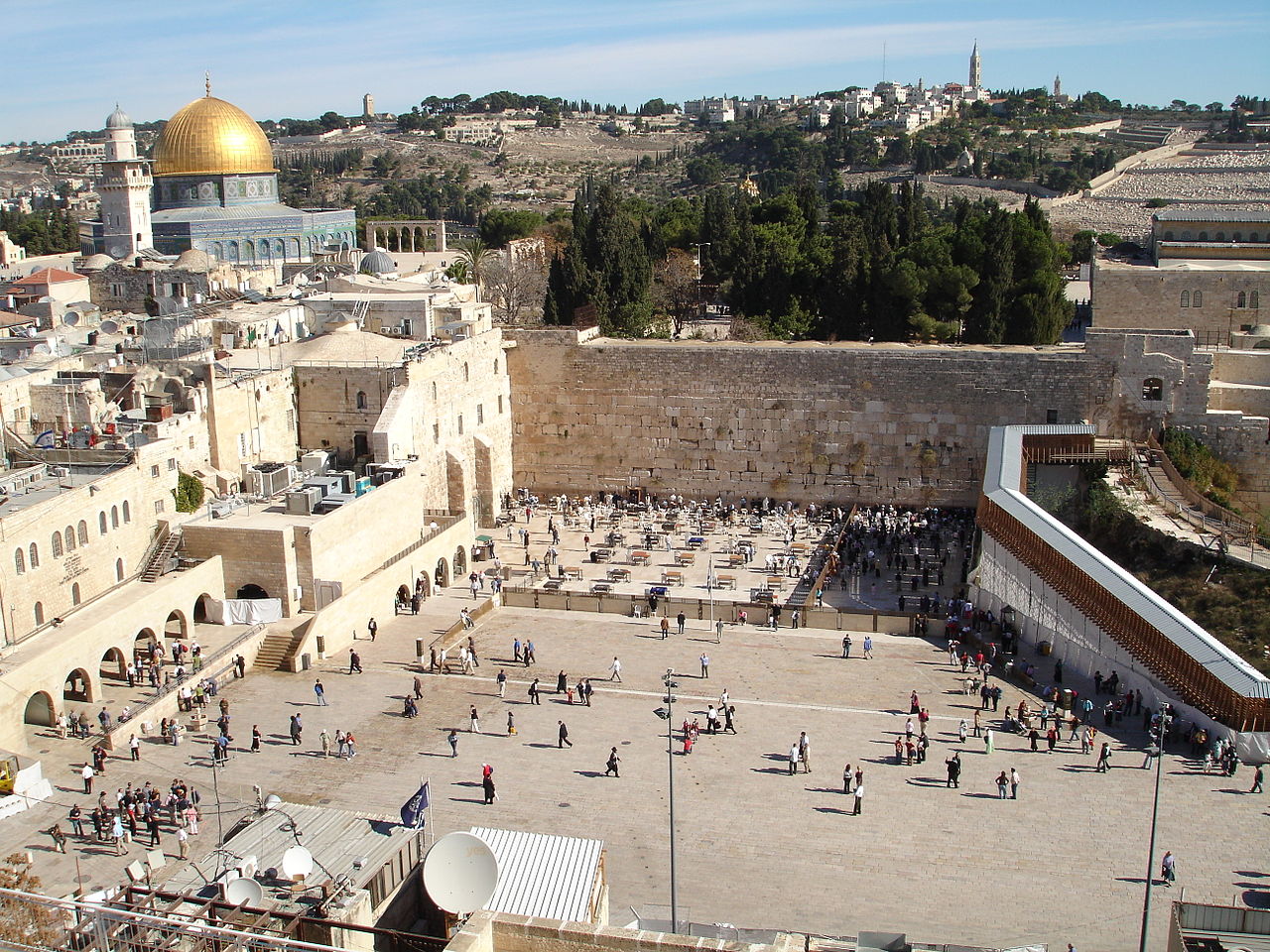
Above: The Western Wall, East Jerusalem
Finally the Al Aqsa Mosque, considered the third holiest site in Islam, sits atop the Temple Mount, known as Haram al Shareef in Arabic or the Noble Sanctuary.

Above: The Al Asqa Mosque, Temple Mount, Old City, East Jerusalem
It is the site where the Prophet Muhammed travelled to from Mecca before ascending to Heaven in what the Islamic faith refers to as the Night Journey.
These sites have lured pilgrims and historians for many generations and have a special place in the hearts of billions around the world.
Before the Six Day War there were five distinct districts that made up the Old City: the Muslim Quarter, the Christian Quarter, the Armenian Quarter, the Moroccan Quarter and the Jewish Quarter.
In the weeks after the Six Days War Israeli forces occupied the Old City and bulldozed the ancient Moroccan Quarter to make room for access to the Western Wall.
Under international law, none of this land belongs to Israel, but still they have been controlling the City for the last 50 years.
To live in East Jerusalem must be challenging for the foreigner of a non-religious bent, for on Fridays Muslim shops are closed, on Saturdays (Shabbat) Jewish establishments are closed and the Christians close theirs on Sundays.
Getting around is also an experimental experience, for Jerusalem has two parallel transportation systems: Israeli buses that go everywhere except the Arab quarters and Arab minivans that operate only in the Arab quarters.
Every apartment has its own black painted, owner-labelled water tank hooked up to solar panels on the roof.
Most expats prefer to live in the Palestinian part of Jerusalem, creating a strange mix of palatial homes set in the midst of garbage and debris.
East Jerusalem is Paradise compared to other areas of the West Bank or the Gaza Strip.

For example, in Gaza there is only one crossing into Israel, yet Gazans are never allowed to leave.
It is strange to think that 1.5 million people live behind a wall that they can never go beyond.
By comparison East Jerusalem has 70 checkpoints and more than 600 closed crossings.
On maps one finds a green line dividing the City.
The famous Green Line was pencilled on a map at the end of the first Israeli-Arab War (1948) by generals from both sides, dividing the territory between the new Israeli nation and a future Palestine.
This armistice line is still at issue in peace agreements and negotiation talks.
This line is a high separation wall.

This wall is a symbol of oppression, restricting the Palestinians´ freedom of movement in their own land.
The occupation is seen by many as not only destroying Palestinian society but damaging Israeli society as well.
The border patrols wear black, the army is in green, special forces wear berets.
Graffiti covers some walls.
The visitor steps around concertina wire and wades through piles of trash in some places.
The Israeli settlements within Palestinian territory are modern, like rich Swiss cities on poor Bangladeshi land.
The West Bank is divided into three areas: A, B and C.
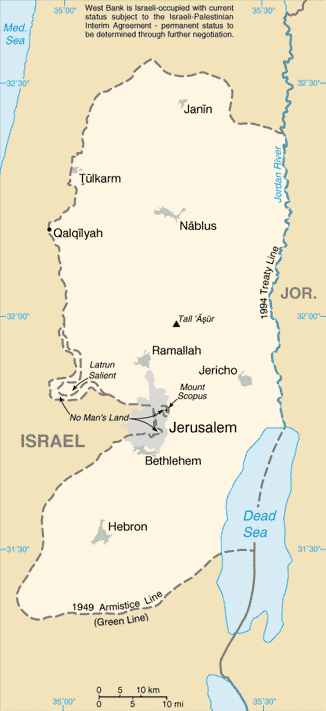
Above: Map of the West Bank
Area C is under the full control of the Israeli army.
Area B is under partial Israeli control.
Area A (less than 10% of the territory) is under Palestinian control, but this control is only theoretical as almost every night the Israeli army enters Area A to search, arrest and interrogate residents.
Israel is a democracy for Jews, but not for the Arabs within its borders.
The UN sees nothing.
Some folks say that Jerusalem is like a wife, in that you can´t share her.
But I think the problem is not so much that neither Jew nor Arab wish to share, but rather their mutual fear and distrust of one another makes even wishing for peace the act of a madman.
Perhaps the madness of Trump is the only solution for the eternal insanity that infects Israel and the Palestinian territories.
Send a madman to solve an insane problem?
I would like to visit Jerusalem, Israel and Palestine one day, to see history that never died.
I would like to climb ths Stairs of the Scales of Souls and sit under the Dome of Learning on the Temple Mount.
I would like to walk through Damascus Gate and shop on The Cardo.

Above: The Damascus Gate
Oh, to stand on the left and watch the faithful Jews gather at the Wailing Wall, or to imagine Christ´s procession, cross heavy on his shoulder, upon the Via Dolorosa – the sorrowful way.
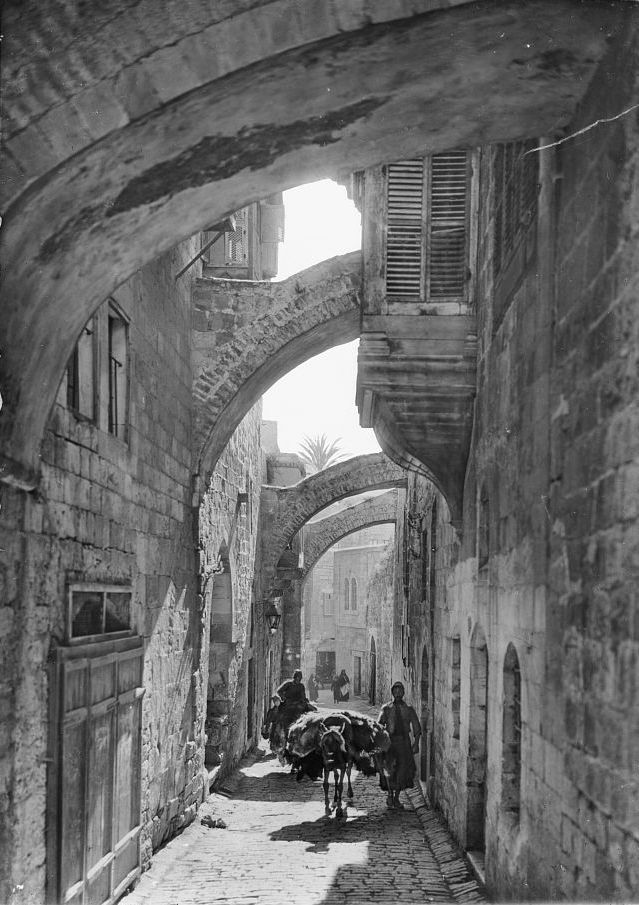
Above: The Via Dolorosa, Jerusalem
Oh, to climb the Tower of David or ride the Time Elevator.
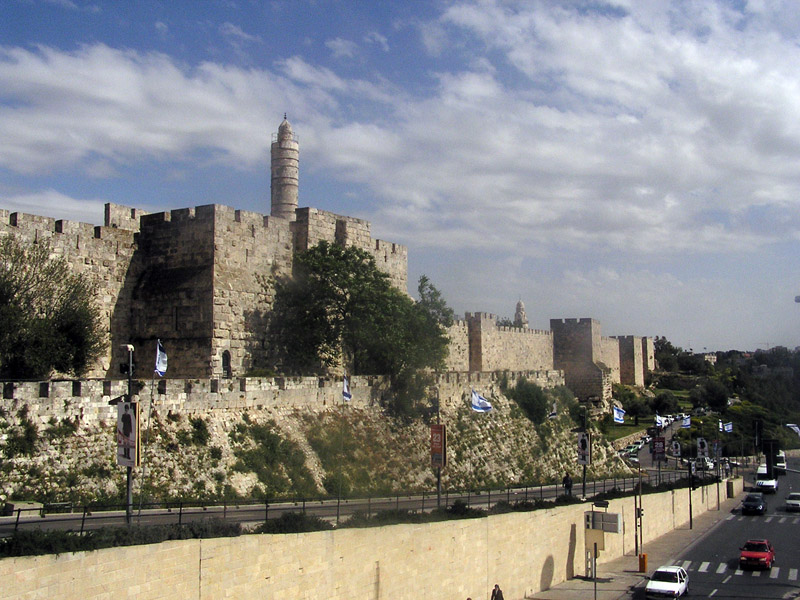
Above: The Tower of David and the Old City walls
Oh, to stand in the Garden of Gethsemane and watch the sun rise, or to stand upon Golgotha and contemplate the power of belief that a crucified condemned criminal could save the world through His sacrifice.
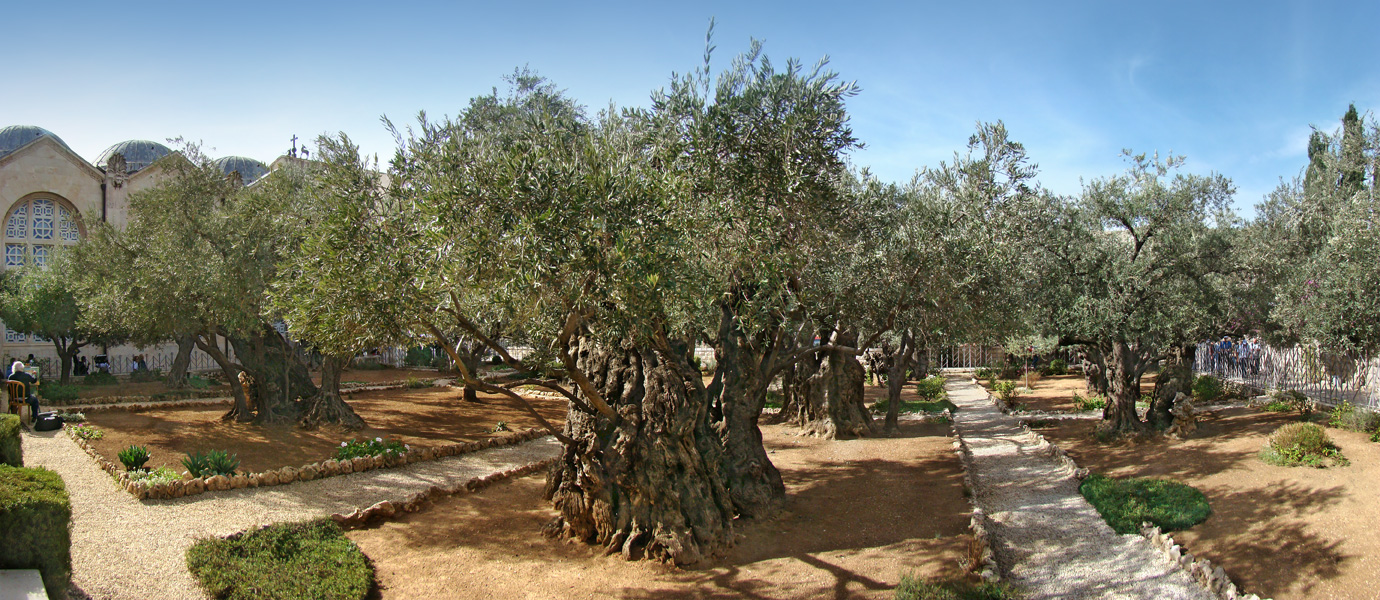
Above: The Garden of Gethsemane, Jerusalem
To barter for bargains in the colourful and bustling Mahane Yehuda and quietly stare at the ultra-orthodox in the Me´a She´arim district.

To have one´s soul cry at the inhumanity of humanity in the Holocaust Museum on Mount Zikaron and realize that there are some lessons that history unfailingly repeats in the guises of order, security, religion or race.
There is more to Israel, more to Palestine, than Jerusalem.
To float on the Dead Sea, to dance in Tel Aviv, to ponder the prophecy of Megiddo, to marvel at the Baha´i who respect all religions yet are unloved by those they respect, to see the vast expanse of the Negev Desert and the lush mountains of the Golan Heights and the coral beaches of Eilat.

Above: The Dead Sea
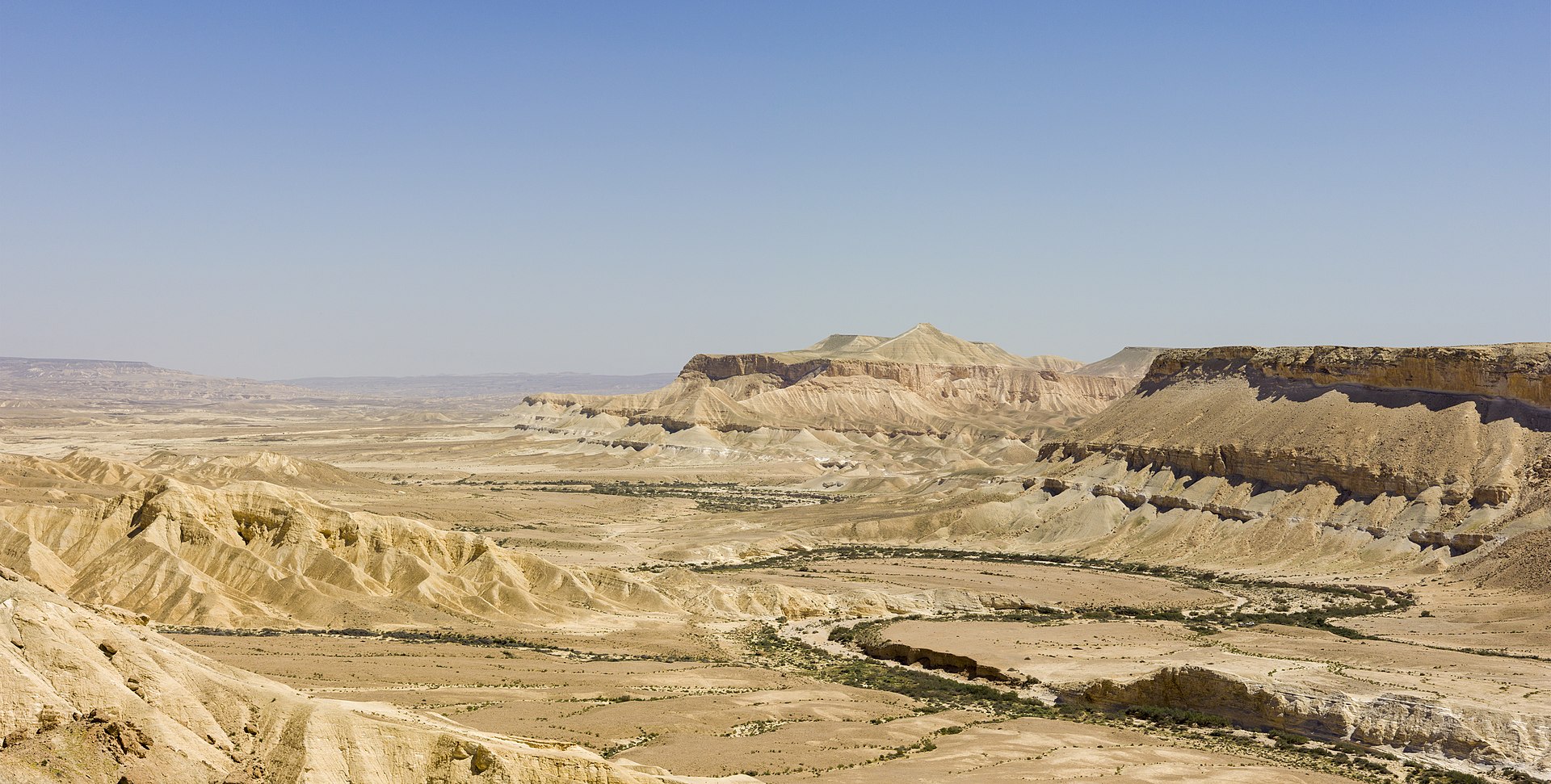
Above: The Negev Desert

Above: The Golan Heights

Above: North Beach, Eliat
To join a part of the unholy throngs of uncomprehending tourists trampling through ruins as if seeing the past will somehow redeem the sins of the present.
I´m a little bit crazy that way.
Sources: Wikipedia / Lonely Planet Middle East / Guy Delisle, Jerusalem: Chronicles from the Holy City
